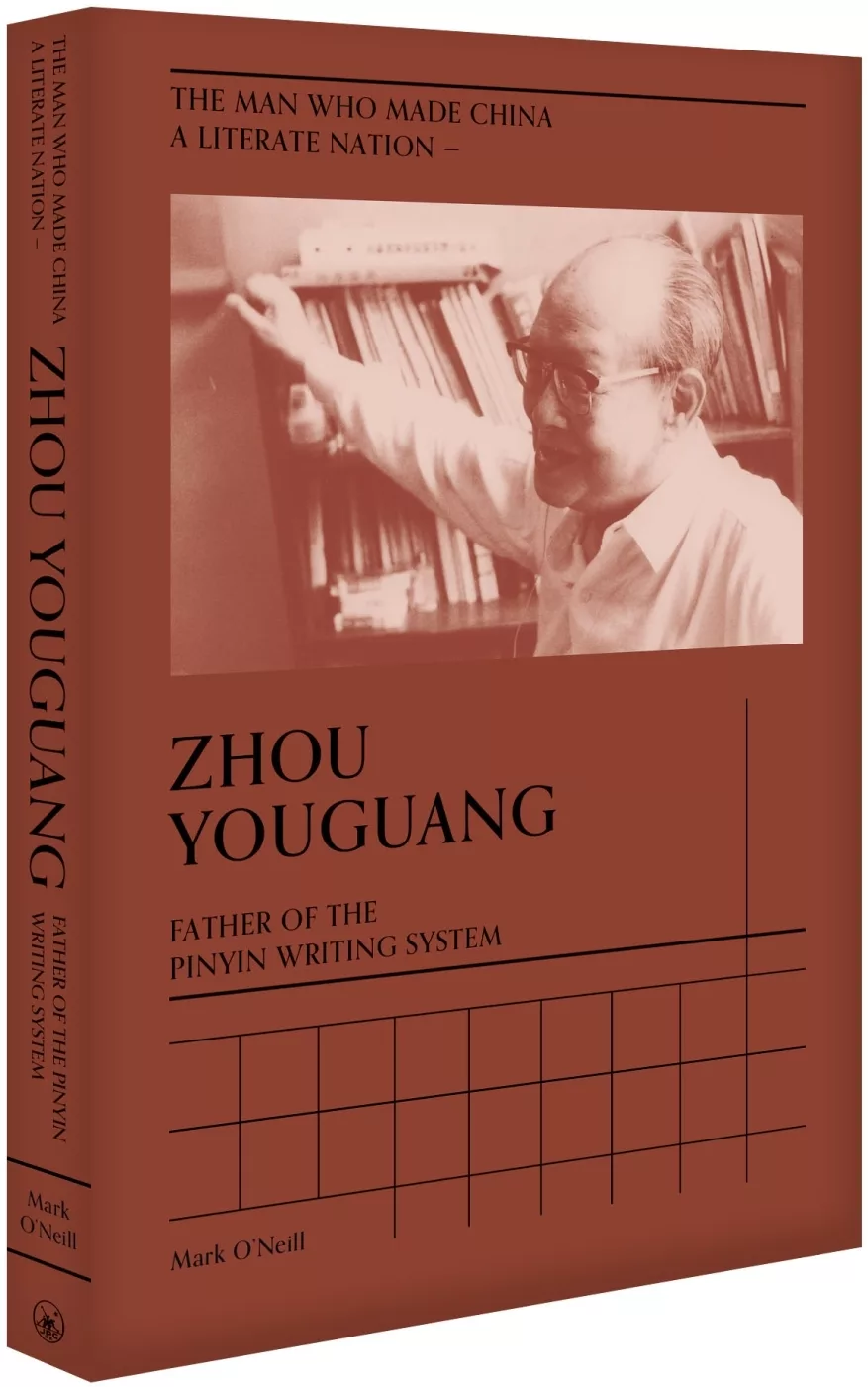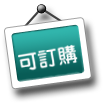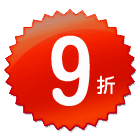|
|
|
The Man Who Made China a Literate Nation – Zhou Youguang, Father of the Pinyin Writing System
|

|

沒有庫存
訂購需時10-14天
|
|
|
|

|
|
9789620452819 | |
|

|
|
Mark O’Neill | |
|

|
|
三聯 | |
|

|
|
2024年2月07日
| |
|

|
|
253.00 元
| |
|

|
|
HK$ 227.7
|
|
|
|
|

| |
|
|
|
|
| |
|
|
詳
細
資
料
|
ISBN:9789620452819規格:平裝 / 224頁 / 14.8 x 21 x 1.12 cm / 普通級 / 單色印刷 / 初版出版地:香港
|
|
分
類
|
人文社科 > 傳記/自傳 > 學者/科學家 |
同
類
書
推
薦
|
|
|
內
容
簡
介
|
Zhou Youguang is the scholar who invented Pinyin(拼音), a system of romanisation for Chinese characters. Since 1958, Chinese primary school students have learnt Pinyin, before they learn characters. Thanks to him, one billion Chinese have become literate – the greatest contribution by a linguist in history. After an extraordinary life, he died in January 2017 at the age of 111. He had several lives – a banker in Shanghai, New York and London; supplying food and textiles for the army and ordinary people during World War Two;: after 1949, a linguist. He lived through all the campaigns of the Maoist period, spending 28 months in a labour camp in west China. He wrote 49 books, many critical of the Soviet Union, the Soviet model used in China and of Mao Zedong. In the last 20 years of his life, he was one of the few intellectuals in China willing to speak the truth in public. He lived so long thanks to an innate optimism, intellectual curiosity about everything and a Buddhist-like humility to see himself and his belongings as of little value.
|
|
目
錄
|
Thanks and Acknowledgements
Introduction: The Man Who Made China A Literate Nation
Chapter One: Blessed In Family And Education
Chapter Two: Two Universities, A ‘Profitable’ Marriage And Missing Professor In Japan
Chapter Three: Becoming A Banker, Fleeing Down The Yangtze
Chapter Four: World War – Feeding The Nation, Escaping Bombs
Chapter Five: United States And Britain – Learning Every Day
Chapter Six: Creating Pinyin, Changing History
Chapter Seven: Saved from Prison by Linguistics: Millions Starve To Death
Chapter Eight: “Cow Pen” and Blanket Bombing By Wild Geese
Chapter Nine: Return To “Normal”, Pinyin Becomes Global Standard
Chapter Ten: “Encyclopaedia Zhou” Hong Kong And The United States – Reconnecting With The World
Chapter Eleven: Pinyin Brings Mandarin To The Information Superhighway
Chapter Twelve: “God Is Too Busy, He Has Forgotten Me” – Final Years
Bibliography
?
|
|
序
|
序
Introduction - The Man Who Made China A Literate Nation
When young Mainland children arrive in primary school, they go to a Chinese class. The professor teaches them not characters but Pinyin, an alphabet using Roman letters with four different tones. Once they have mastered it, then the professor starts to teach them characters; thanks to the Pinyin next to each character, they can read it. Without it, they would not know how to pronounce them.
It is this system – full name Hanyu Pinyin, meaning Chinese phonetics – which has turned China into a literate nation. It was introduced in 1958, when 80 per cent of the population was illiterate. Since then, a billion people have learnt Pinyin and the rate of illiteracy has fallen to below 10 per cent.
The invention of Pinyin has also been a godsend for the millions of foreigners who learn Chinese. In numbers of people it has made literate, it is the greatest achievement in linguistics in human history.
The man most responsible for Pinyin? is Zhou Youguang, director of the department in the Chinese Character Reform Commission (CCRC) instructed in 1955 to create a new romanisation system.
Several phonetic systems already existed; some were created by foreign missionaries who needed to master Chinese to spread the gospel to the world’s most populous nation. But Zhou – and the leaders of the government – believed that none of the existing systems was easy nor simple enough. It took him and his colleagues three years of intense work. In the middle, the Soviet Union, China’s “Big Brother” at the time, pressed them to use Cyrillic letters rather than Roman ones. No, said Zhou, Roman letters were the global standard and understood by millions of overseas Chinese around the world.
The task was extremely difficult. Chinese has more than 100,000 characters. Secondary school students are expected to master 3,500, and university graduates 5,000-6,000. The greatest obstacle is the fact that hundreds of characters have the same sound; how to romanise them, when the Latin alphabet has only 26 letters?
In history, Chinese was the written language of several Asian countries, including Korea, Japan and Vietnam. All three took a different route than China did. Each decided that the characters were simply too difficult for their people to learn and they had to find an alternative.
In the 15th century, King Sejong the Great of Korea commissioned a group of scholars to create an alphabet suited to the spoken language used by his people; they invented Hangul with 14 consonant letters and 10 vowel letters. Today it is the official written language of both South and North Korea. Since it was created by scholars, it was easy to learn and entirely logical.
In Vietnam, Portuguese, Italian and French missionaries in the 17th century created a Latin script to replace the characters. It is the basis of the Vietnamese written language used today. Japan uses three alphabets: Chinese characters;? one called hiragana developed from the 7th century AD; and? another called katakana, mainly for imported words. The latter two are phonetic, not pictograms. Once you have learnt them, you can pronounce the words.
After the Meiji Restoration in 1868, Japan had an intense debate over its language. Was it an obstacle to modernisation and learning the new terms in science, industry and armaments needed to catch up with the West? One scholar even proposed that they abandon Japanese completely and adopt French instead. In the end, the government decided to retain the three alphabets; they are still in use today.
China did not follow the example of Korea, Vietnam and Japan. It has maintained characters as its written script. It is the most difficult language in the world to learn, because each character is distinct and must be learnt individually. That is why the rate of literacy was so low – 10-15 per cent – at the end of the Qing dynasty in 1911.
The new Republic of China replaced Classical Chinese with vernacular Chinese as the writing system and vigorously promoted primary and secondary education. But an eight-year (1937-45) war with Japan and then a civil war – a total of 12 years of war – severely interrupted education and the growth of literacy. That is why the level was only 20 per cent at the foundation of the People’s Republic in 1949.
Little in Zhou’s early life prepared him to be “The Father of Pinyin”. He was born in January 1906 into a cultivated family in Changzhou, Jiangsu province in east China; it was one of the richest and most advanced areas of the country. He was educated at modern schools in Changzhou and Suzhou and attended St John’s University in Shanghai; with English as its teaching medium, it was the most famous Western university in China at the time.
Zhou’s specialty was economics. He went on to further studies at universities in Tokyo and Kyoto and learnt Japanese. He could also speak French. During World War Two, he worked for the Agricultural Bureau of the government, based in Chongqing, the wartime capital.
After 1945, he worked for Xinhua Bank in Shanghai, New York and London. Then, after 1949, he became a professor of economics at Fudan University in Shanghai. But he was always interested in linguistics. A prolific author with an encyclopaedic curiosity, he published articles and books on linguistics, as on other subjects that interested him. One of them, The History of Alphabets, was published in Shanghai in November 1954. It was read by Chairman Mao and other senior officials eager to reform the language. That is what led to the order to leave Shanghai and join the CCRC in Beijing in 1955. Zhou insisted he was a layman in linguistics and that economics was his field.? But there was no refusing the order. It changed his life.
In 1982, the International Organization for Standardization (ISO) approved Pinyin as the global standard for written Chinese. This meant that it was used to write place and personal names, by post offices, aviation companies, immigration and customs officers and other official agencies. It was international recognition for Zhou’s work. The United Nations adopted Pinyin in 1986. It is used by institutions and universities around the world.
In an interview in March 2009, Zhou said that one billion Chinese had used Pinyin to learn how to read and write. “It is not perfect but it has worked,” he said with characteristic modesty.
His other great contribution came with digitalisation and the Internet. How do you write Chinese on a computer? While there are different systems, Pinyin is one of the most popular. Millions of Chinese use it, as does your modest author. About 900 million Chinese use the Internet and the number is rapidly catching up the 1.2 billion users of English. Dr Vinton Gray Cerf, one of the founders of the Internet, made a plaque in Zhou’s memory. It reads: “His brilliant and persistent invention of Pinyin helped to bring the Internet and its applications within reach of the Chinese-speaking community. Long may he be remembered!”Outside Pinyin, Zhou had an extraordinary life. He lived through four Chinese dynasties – the Manchu, the Beiyang government, the Kuomintang and the Communists. Few people in the world live to the age of 111, and almost none retain to the end Zhou’s intense curiosity and ability to write books and engage in serious dialogue with others.
He lived through the terrible campaigns of Maoist China, including the Cultural Revolution. In November 1969, at the age of 63, he was sent to a labour camp in the western desert region of Ningxia; he stayed there for 28 months. After the Cultural Revolution, he returned to work at the CCRC and retired in 1991, at the age of 85.
He was one of three Chinese editors of 10 volumes of Encyclopaedia Britannica, the first published in China. He lived in a small Beijing apartment, where he worked in a study of nine square metres. After his “retirement”, he turned out books and articles on a wide range of topics. He retained his extraordinary curiosity and mental clarity and a wide circle of friends and admirers, Chinese and foreign. In total, he wrote 49 books. He died on January 14, 2017, one day after his 111th birthday.
Hundreds of millions of Chinese and foreigners, including this one, owe him a great debt of gratitude. Few scholars in history have changed the world as he did.
|
|
|
書
評
|
|
|
|

